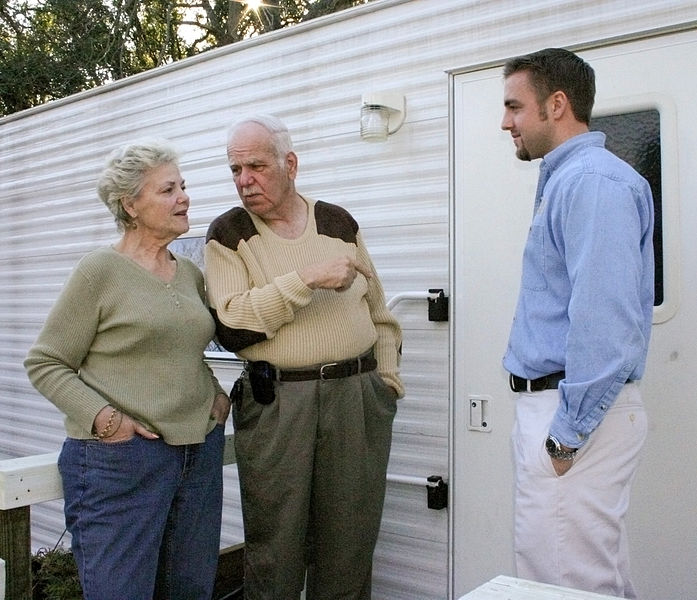America’s older population is in the midst of unprecedented growth, but the country is not prepared to meet the housing needs of this aging group, concludes a new report released by the Harvard Joint Center for Housing Studies and AARP Foundation.
According to Housing America’s Older Adults—Meeting the Needs of An Aging Population, the number of adults in the U.S. aged 50 and over is expected to grow to 132 million by 2030, an increase of more than 70% since 2000. But housing that is affordable, physically accessible, well-located, and coordinated with supports and services is in too short supply.
Housing is critical to quality of life for people of all ages, but especially for older adults. High housing costs currently force a third of adults 50 and over—including 37% of those 80 and over—to pay more than 30% of their income for homes that may or may not fit their needs, forcing them to cut back on food, healthcare, and, for those 50-64, retirement savings.
Much of the nation’s housing inventory also lacks basic accessibility features (such as no-step entries, extra-wide doorways, and lever-style door and faucet handles), preventing older persons with disabilities from living safely and comfortably in their homes. Additionally, with a majority of older adults aging in car-dependent suburban and rural locations, transportation and pedestrian infrastructure is generally ill-suited to those who aren’t able to drive, which can isolate them from friends and family.
Finally, disconnects between housing programs and the healthcare system put many older adults with disabilities or long-term care needs at risk of premature institutionalization.
“Recognizing the implications of this profound demographic shift and taking immediate steps to address these issues is vital to our national standard of living,” says Chris Herbert, acting managing director of the Harvard Joint Center for Housing Studies. “While it is ultimately up to individuals and their families to plan for future housing needs, it is also incumbent upon policy makers at all levels of government to see that affordable, appropriate housing, as well as supports for long-term aging in the community, are available for older adults across the income spectrum.”
Of special concern as the older population in the U.S. continues to swell are the younger baby boomers who are now in their 50s. With lower incomes, wealth, homeownership rates, and more debt than generations before them, members of this large age group may be unable to cover the costs of appropriate housing or long-term care in their retirement years.
Indeed, while a majority of people over 45 would like to stay in their current residences as long as possible, estimates indicate that 70% of those who reach the age of 65 will eventually need some form of long-term care. In this regard, older homeowners are in a better position than older renters when they retire. The typical homeowner age 65 and over has enough wealth to cover the costs of in-home assistance for nearly nine years or assisted living for six and half years. The typical renter, however, can only afford two months of these supports.
“As Americans age, the need for safe and affordable housing options becomes even more critical,” says Lisa Marsh Ryerson, President of the AARP Foundation. “High housing costs, aging homes, and costly repairs can greatly impact those with limited incomes. The goal in our support of this report is to address the most critical needs of these households and it is AARP Foundation’s aim to provide the tools and resources to help them meet these needs now and in the future.”
Check out the infographic below to better understand some of the study's findings.
Source: Harvard JCHS & AARP Foundation
Related Stories
| Jul 18, 2014
Top Engineering/Architecture Firms [2014 Giants 300 Report]
Jacobs, AECOM, Parsons Brinckerhoff top Building Design+Construction's 2014 ranking of the largest engineering/architecture firms in the United States.
| Jul 18, 2014
Top Engineering Firms [2014 Giants 300 Report]
Fluor, Arup, Day & Zimmermann top Building Design+Construction's 2014 ranking of the largest engineering firms in the United States.
| Jul 18, 2014
Top Architecture Firms [2014 Giants 300 Report]
Gensler, Perkins+Will, NBBJ top Building Design+Construction's 2014 ranking of the largest architecture firms in the United States.
| Jul 18, 2014
2014 Giants 300 Report
Building Design+Construction magazine's annual ranking the nation's largest architecture, engineering, and construction firms in the U.S.
| Jul 7, 2014
7 emerging design trends in brick buildings
From wild architectural shapes to unique color blends and pattern arrangements, these projects demonstrate the design possibilities of brick.
| Jul 2, 2014
Emerging trends in commercial flooring
Rectangular tiles, digital graphic applications, the resurgence of terrazzo, and product transparency headline today’s commercial flooring trends.
| Jun 30, 2014
Research finds continued growth of design-build throughout United States
New research findings indicate that for the first time more than half of projects above $10 million are being completed through design-build project delivery.
| Jun 18, 2014
Arup uses 3D printing to fabricate one-of-a-kind structural steel components
The firm's research shows that 3D printing has the potential to reduce costs, cut waste, and slash the carbon footprint of the construction sector.
| Jun 12, 2014
Austrian university develops 'inflatable' concrete dome method
Constructing a concrete dome is a costly process, but this may change soon. A team from the Vienna University of Technology has developed a method that allows concrete domes to form with the use of air and steel cables instead of expensive, timber supporting structures.
| May 29, 2014
7 cost-effective ways to make U.S. infrastructure more resilient
Moving critical elements to higher ground and designing for longer lifespans are just some of the ways cities and governments can make infrastructure more resilient to natural disasters and climate change, writes Richard Cavallaro, President of Skanska USA Civil.


















